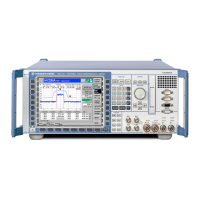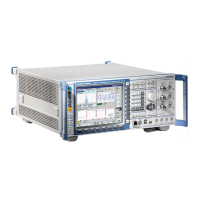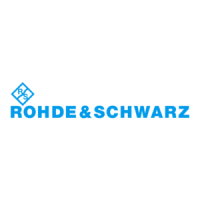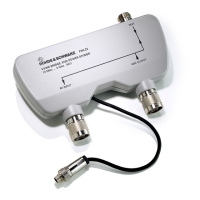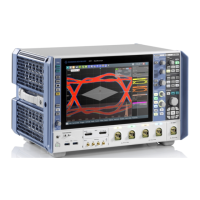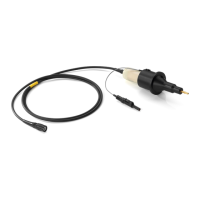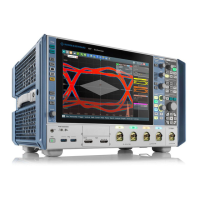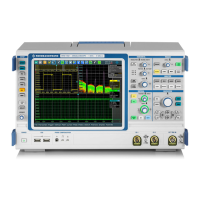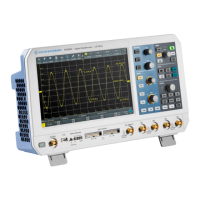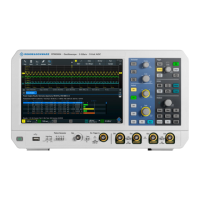Status Reporting System CMU
1100.4903.12 5.24 E-8
Application of the Status Reporting Systems
In order to effectively use the status reporting system, the information contained there must be transmit-
ted to the controller and further processed there. There are several methods which are outlined in the
following.
Service Request
Under certain circumstances, the instrument can send a service request (SRQ) to the controller. Usu-
ally this service request initiates an interrupt at the controller, to which the control program can react
appropriately. As evident from Fig. 5-5, an SRQ is always initiated if one or several of bits 2, 3, 4, 5 or 7
of the status byte are set and enabled in the SRE. Each of these bits combines the information of a
further register, the error queue or the output buffer. The corresponding setting of the ENABle parts of
the status registers can achieve that arbitrary bits in an arbitrary status register initiate an SRQ. In order
to use the possibilities of the service request effectively, all bits should be set to "1" in the enable regis-
ters SRE and ESE.
Examples (cf. Fig. 5-5):
Use command "*OPC" to generate an SRQ
! Set bit 0 in the ESE (Operation Complete)
! Set bit 5 in the SRE (ESB)
After its settings have been completed, the instrument generates an SRQ.
Indication of an event (e.g. overloading of used input connector) by means of an SRQ with the control-
ler:
! Set bit 7 in the SRE (sum bit of the STATus:OPERation register)
The following steps depend on the secondary address (0 ≤ <SecAddr> ≤ 29) assigned to the function
group and signalling mode used.
0 ≤ <SecAddr> ≤ 14
! Set bit 8 in the STATus:OPERation:ENABle
register.
! Set bit <SecAddr>-1 in the
STATus:OPERation:CMU:SUM1:ENABle
register
! Set bit 0 in the
STATus:OPERation:CMU:SUM1:CMU
<SecAddr>:ENABle register.
15 ≤ <SecAddr> ≤ 29
! Set bit 9 in the STATus:OPERation:ENABle
register.
! Set bit <SecAddr>-16 in the
STATus:OPERation:CMU:SUM2:ENABle
register
! Set bit 0 in the
STATus:OPERation:CMU:SUM2:CMU
<SecAddr>:ENABle register.
When the event assigned to bit no. 0 of the STATus:OPERation:CMU:SUM1|2:CMU<SecAddr> register
occurs (e.g. when the input connector is overloaded in function group RF Non Signalling) the instru-
ment generates a SRQ.
The same procedure can be applied to find out which event caused an SRQ:
! STB?
! Query STAT:OPER:EVENT?
! Query STAT:OPER:CMU:SUM1|2:EVENT? (function group, signalling mode)
! Query STAT:OPER:CMU:SUM1|2:CMU1...15:EVENT? (measurement)
The SRQ is the only possibility for the instrument to become active on its own. Each controller program
should set the instrument such that a service request is initiated in the case of malfunction. The pro-
gram should react appropriately to the service request.
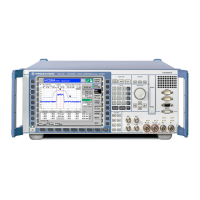
